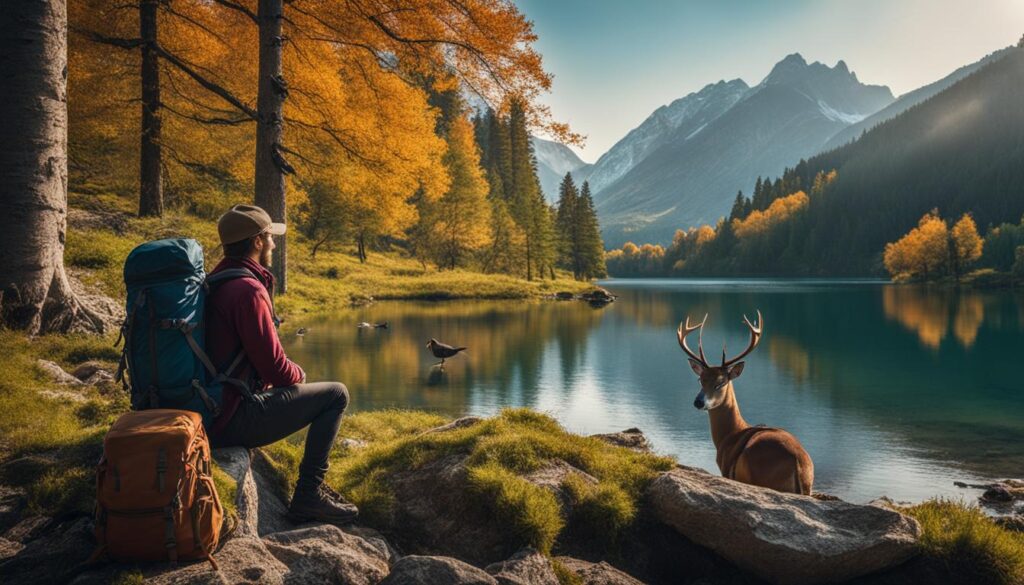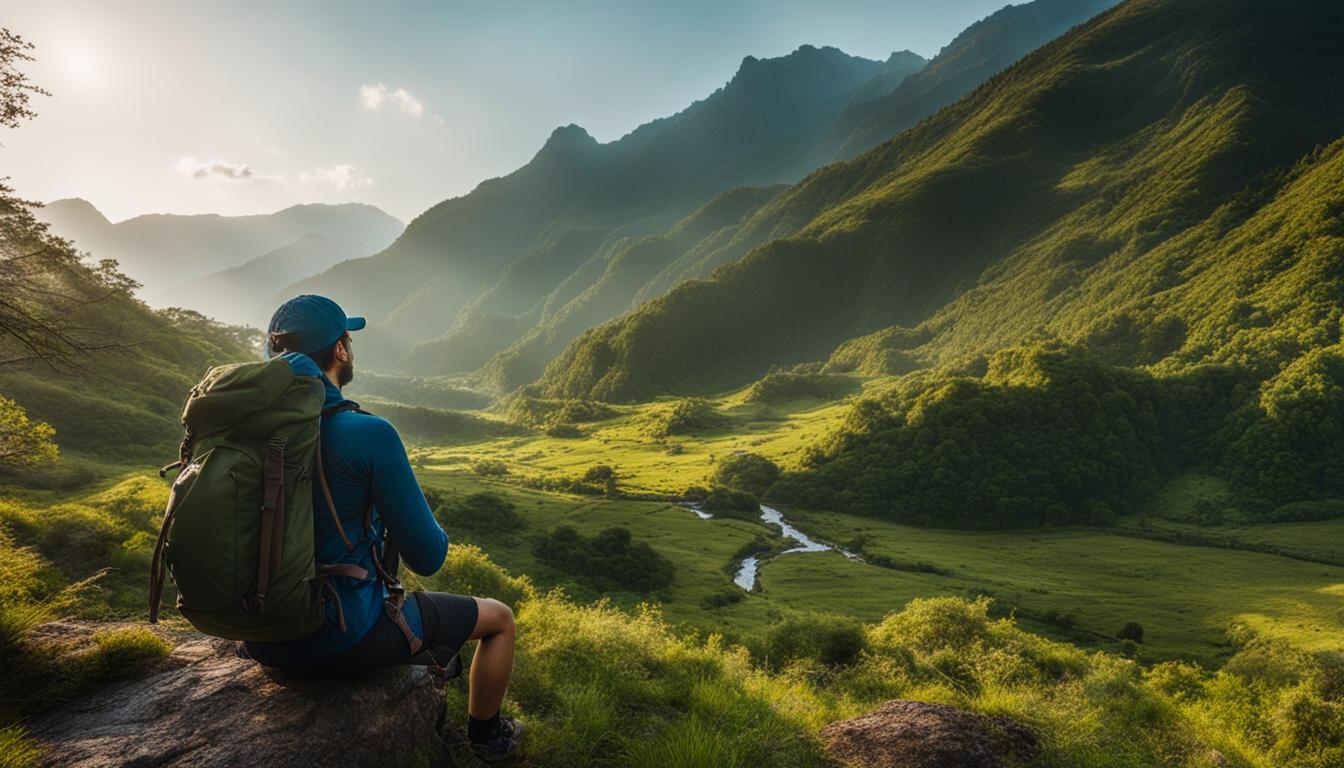I’m excited to share with you the incredible ways in which backpacking can make a positive impact on wildlife preservation. As a nature enthusiast, I’ve discovered that sustainable backpacking techniques play a crucial role in minimizing our impact on the environment and protecting the habitats of various species.
Through my research, I’ve found that practicing eco-friendly backpacking not only allows us to enjoy the great outdoors but also promotes the well-being of wildlife populations. By implementing conservation-friendly practices, backpackers like you and me can actively contribute to safeguarding natural ecosystems and preserving the delicate balance of nature.
Key Takeaways:
- Sustainable backpacking techniques minimize our impact on the environment.
- Practicing Leave No Trace principles ensures we leave nature untouched.
- Carrying reusable water bottles reduces plastic waste and protects wildlife habitats.
- Staying on designated trails minimizes disturbance to wildlife.
- Backpackers have the power to promote wildlife preservation through responsible practices.
The Importance of Responsible Backpacking for Wildlife Conservation

Responsible backpacking practices play a crucial role in wildlife conservation efforts. As nature enthusiasts, it is our responsibility to minimize our impact on the environment and protect the habitats of various species. By adhering to Leave No Trace principles, we can ensure that our backpacking adventures contribute to the preservation of wildlife.
One key aspect of responsible backpacking is proper waste disposal. It is essential to pack out all trash and not leave any behind. This includes disposing of food waste in a way that does not attract wildlife. By doing so, we can prevent animals from becoming dependent on human food and reduce the risk of negative encounters between humans and wildlife.
Respecting wildlife is another vital component of responsible backpacking. Keeping a safe distance from animals and refraining from approaching or feeding them is crucial for their protection. While encountering wildlife can be an exciting experience, it is important to remember that they are wild creatures and should not be disturbed or disrupted in their natural habitats.
“Responsible backpacking is not only about enjoying the outdoors but also about being mindful of how our actions can impact wildlife. By following guidelines and practicing responsible behavior, we can ensure that future generations will have the opportunity to appreciate and enjoy these incredible creatures.”
The Benefits of Responsible Backpacking for Wildlife Conservation
Responsible backpacking not only helps protect wildlife but also offers numerous benefits for the preservation of natural ecosystems. By staying on designated trails, backpackers minimize their disturbance to wildlife habitats and reduce the risk of trampling sensitive vegetation. This allows plants and animals to thrive undisturbed, contributing to the overall health of the ecosystem.
Furthermore, practicing sustainable backpacking techniques, such as using reusable water bottles and eco-friendly hygiene products, helps reduce plastic waste and minimize the pollution of natural water sources. By minimizing our ecological footprint, we are directly contributing to the conservation of wildlife and their habitats.
The Role of Backpacking in Promoting Wildlife Preservation
Backpacking can be an effective tool in promoting wildlife preservation. By spreading awareness about responsible backpacking practices, we can educate and inspire other outdoor enthusiasts to make conservation-friendly choices during their adventures. Sharing information about the importance of protecting wildlife and the benefits of responsible backpacking can help create a community of environmentally conscious backpackers.
Collaborative efforts between land management agencies, outdoor recreation groups, and backpackers can also contribute to wildlife preservation. By working together, we can create and maintain trails that minimize disturbances to wildlife habitats, provide educational signage, and establish regulations that promote responsible backpacking. Ongoing research and monitoring can help identify areas of concern and guide targeted conservation efforts to protect vulnerable species and their ecosystems.
Collaborative efforts for wildlife preservation through backpacking
Backpacking can be a powerful tool in the ongoing conservation of wildlife, especially when combined with collaborative efforts. By working hand in hand, land management agencies and outdoor recreation groups can ensure that backpacking practices are conservation-friendly and minimize negative impacts on wildlife.
One effective approach is to plan and manage natural areas in a way that concentrates trails in specific areas, while leaving other parts trail-free to provide undisturbed habitats for wildlife. This allows for the coexistence of backpackers and wildlife, ensuring that sensitive species have safe spaces to thrive.
Educating backpackers about conservation-friendly practices is equally important. Through proper signage and ongoing education, we can raise awareness among backpackers about the impact of their activities on wildlife and the importance of protecting these species. By understanding the role they play in conservation, backpackers can become ambassadors for wildlife preservation.
Ongoing research and monitoring are key components of collaborative efforts. By studying the behavior and needs of wildlife in different areas, we can gain valuable insights that guide targeted conservation efforts. This scientific approach helps us make informed decisions and adapt our practices to better protect the species and their habitats.

